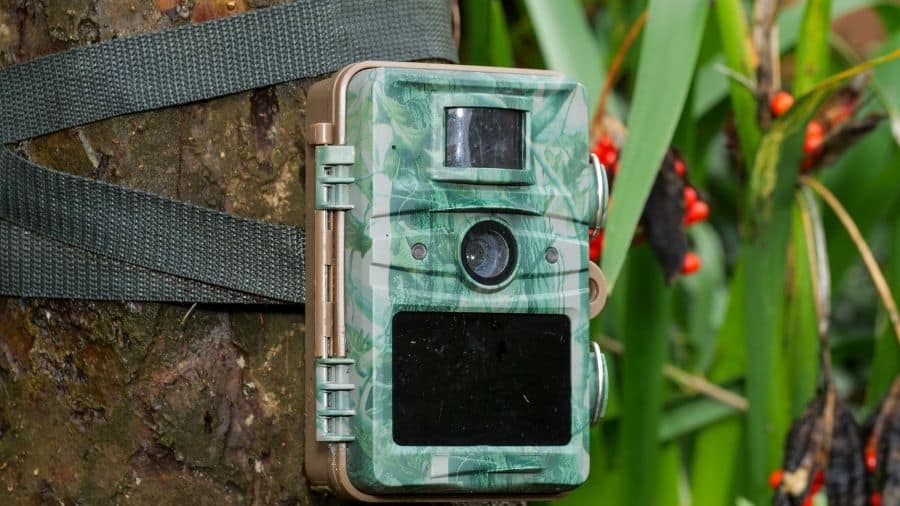10 Field-Tested Tricks to Locate Secret Trail Cams Before They See You
Have you ever felt that itch on the back of your neck that tells you you’re being watched while scouting your hunting spots? Those hidden eyes may just belong to strategically placed trail cameras other hunters have snuck onto your land.
Trail cams give them an unfair home field advantage by tracking your patterns without you even knowing. But you can beat them at their own game and level the playing field.
In this article, I’ll show you 10 field-tested tricks I’ve used to uncover concealed trail cameras on properties I hunt. You’ll learn how to spot the telltale signs of hidden cameras before they can gather intel on your trophy hunting strategies and favorite ambush sites.
With the techniques I share, you can scout smarter, hunt better, and have the advantage of knowing if and where trail cameras lie in wait on your land. Let’s uncover their hiding spots first!
Carefully Observe Likely Hiding Spots
The best way to find trail cameras is through careful observation. Look in places where you would set up a trail camera if you were trying to monitor animal patterns discreetly. Some common spots include:
- On trees or attached to branches overlooking trails, food sources, rubs, and scrapes.
- Inside hollow logs or half-buried in leaves on the forest floor.
- Mounted on sturdy rocks or stumps near springs, field edges, and pinch points.
- Near bait piles hunters have set up to attract deer.
- Anywhere that provides a clear view of a valley, field, or other high-traffic area for wildlife.
Slowly scan these areas from a distance using binoculars first. Then move in for a hands-on inspection. Thoroughly check promising hiding spots at multiple heights and angles. Hidden cameras can be tough to spot, so take your time and observe closely.
Use Your Smartphone Camera
The cameras on smartphones can help detect hidden trail cameras using a simple trick – reflectivity. Most trail cameras have a glass lens that can reflect light. To find them, use your smartphone camera like a flashlight shining across an area as you slowly pan around. The lens of a hidden camera will briefly light up or flare from the reflection.
Make sure to test this at home first so you recognize what the reflection looks like. It takes some practice but can reveal even well-camouflaged cameras once you get the technique down. Early morning or evening when light is low provides the best conditions to spot the telltale glint.
Scan for Nearby Wi-Fi Networks
Many modern trail cameras have wireless connectivity and will broadcast a Wi-Fi network ID. Download a wireless network scanner app and check for networks with unusual names while walking areas you suspect may hold hidden cameras.
The signal strength will increase as you get closer to the source. So if you pick up a strange network, move slowly in widening circles until you can pinpoint the location based on signal strength.
This technique won’t pick up older cameras without Wi-Fi, but it can help uncover wirelessly connected models.
Focus on Game Trails
Game trails are natural highways animals use to move from feeding to bedding areas or between water sources. Heavy traffic makes them ideal for monitoring with trail cameras.
Spend time finding and mapping the network of trails on your hunting land. Then walk their length, carefully inspecting danger spots like tight passes for any setups. Use your smartphone camera to check for reflections from hidden lenses.
Focus extra attention near trail intersections or areas with rubs and scrapes. Ambush points like these allow cameras to capture multiple travel routes in a single setup.
Use Landmarks to Re-Locate Suspected Spots
If certain spots seem suspicious but you can’t find a camera, use a natural landmark to help pinpoint the location later. Stack some rocks or put down a stick pointing in the direction you want to investigate further.
Return in the evening when light conditions improve your chances of spotting a hidden lens glare. Or come back under the cover of darkness and use a red light to thoroughly sweep the area. Having an exact reference point helps re-locate spots that warrant a second, more careful look.
Identify Camera Elements
Learn to recognize the components of common trail cameras so you know what to look for. Key elements include:
- Lenses – Glass or acrylic lenses tend to produce the most noticeable glare when illuminated by a light source at night. But even during the day, you can spot clean, dust-free lenses if you look closely.
- Motion sensors – These are found on all but the most basic trail cameras. They are small round black discs resembling microphone heads that detect movement.
- Infrared LEDs – Most cameras have an IR flash bar to illuminate nighttime images. In daylight, these appear as small dark circles in parallel rows.
- Lock boxes – Some setups have a lock box for extra security. Master Lock makes camo boxes that fit certain Bushnell and Browning models.
Learning to quickly recognize trail camera components will help your eyes pick them out when scanning an area.
Listen for Faint Beeping Sounds
When a trail camera snaps a picture, it may make a faint but audible beep. Move slowly and pause frequently when walking through areas of interest to try and detect this sound. The beeps are infrequent but noticeable in quiet woods if you are in range.
Some cameras have an option to mute the beep sound. But many users leave it on to help confirm the camera is working properly when checking it. That small sound can give away camera locations if you train your ears to hear it.
Test Trail Cameras at Home
Practice makes perfect when trying to detect hidden cameras. Before hunting season, set up your own trail cameras in your backyard or around your house. See how well you can spot them using the techniques mentioned above while knowing exactly where they are.
Have family members install and relocate the cameras while you hone your skills at finding them. Starting with a controlled test environment at home will sharpen your ability to uncover cameras in the wild.
Focus on Food Resources
Some of the best locations to set up trail cameras are near prime food resources for deer and other wildlife. Pay special attention to areas like:
- Oak trees dropping lots of acorns.
- Apple or other fruit trees ripe with food.
- Fields of clover, alfalfa, beans, or other attractive forage.
- Hay bales or food plots planted by hunters to draw in deer.
Where you find bountiful food sources, you will often find trail cameras setup to capture images of feeding animals. Take time to carefully inspect these hotspots.
Use a Thermal Imager
For nighttime camera detection, one of the most effective tools is a thermal imager. Thermal technology detects heat signatures and will pick up the warmth given off by a hidden trail camera. Hot spots shaped like a block or box in wooded areas generally indicate a camera setup.
Thermal imagers can be expensive, so this may not be a practical option for all hunters. But for avid hunters who spend a lot of time in the same hunting areas, the investment can repay itself with the home field advantage of knowing camera placement and patterns.
Finding hidden trail cameras comes down to using common sense about where cameras are likely to be, paying close attention to your surroundings, and having a system to thoroughly search suspected areas. With persistence and the right techniques, you can detect cameras before they detect your next trophy buck.
Frequently Asked Questions
What is the range of a typical trail camera?
Most trail cameras have an effective range of 60-80 feet for capturing images. So focus your search efforts within a 60-80 foot radius of game trails, rubs, food sources, etc.
How often should I search for hidden cameras?
At a minimum, do periodic camera checks during scouting and before the start of each hunting season. In heavily hunted areas, more frequent 1-2 week checks may be worthwhile.
What time of day is best for spotting trail cams?
Early morning and evening when sunlight is low on the horizon are the best times. The angled sunlight will cause hidden camera lenses to flare and become noticeable when swept with a light source.
Can I disrupt a camera without touching it?
Yes. Some hunters will carefullythrow sticks or rocks in front of the camera lens to block or obscure it without leaving fingerprints or traces of their presence.
What laws should I know about trail camera usage?
It is illegal in some states to tamper with or remove cameras that are not your property. Know the regulations for your hunting area to avoid potential citations.







